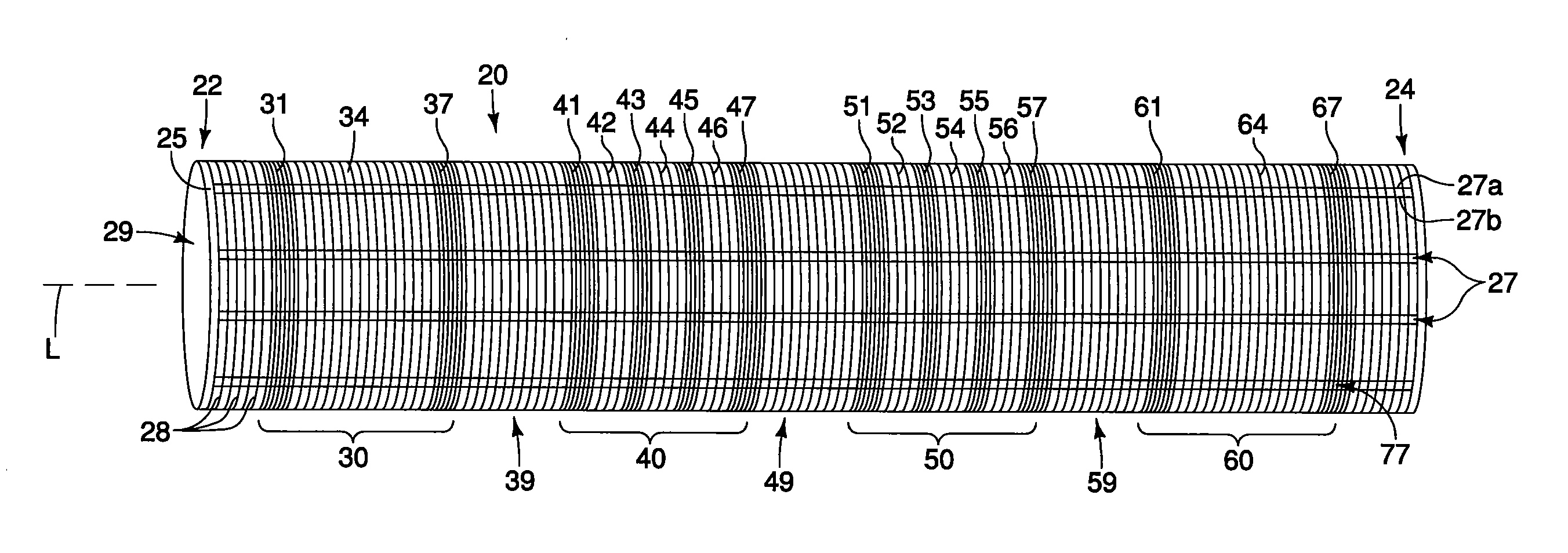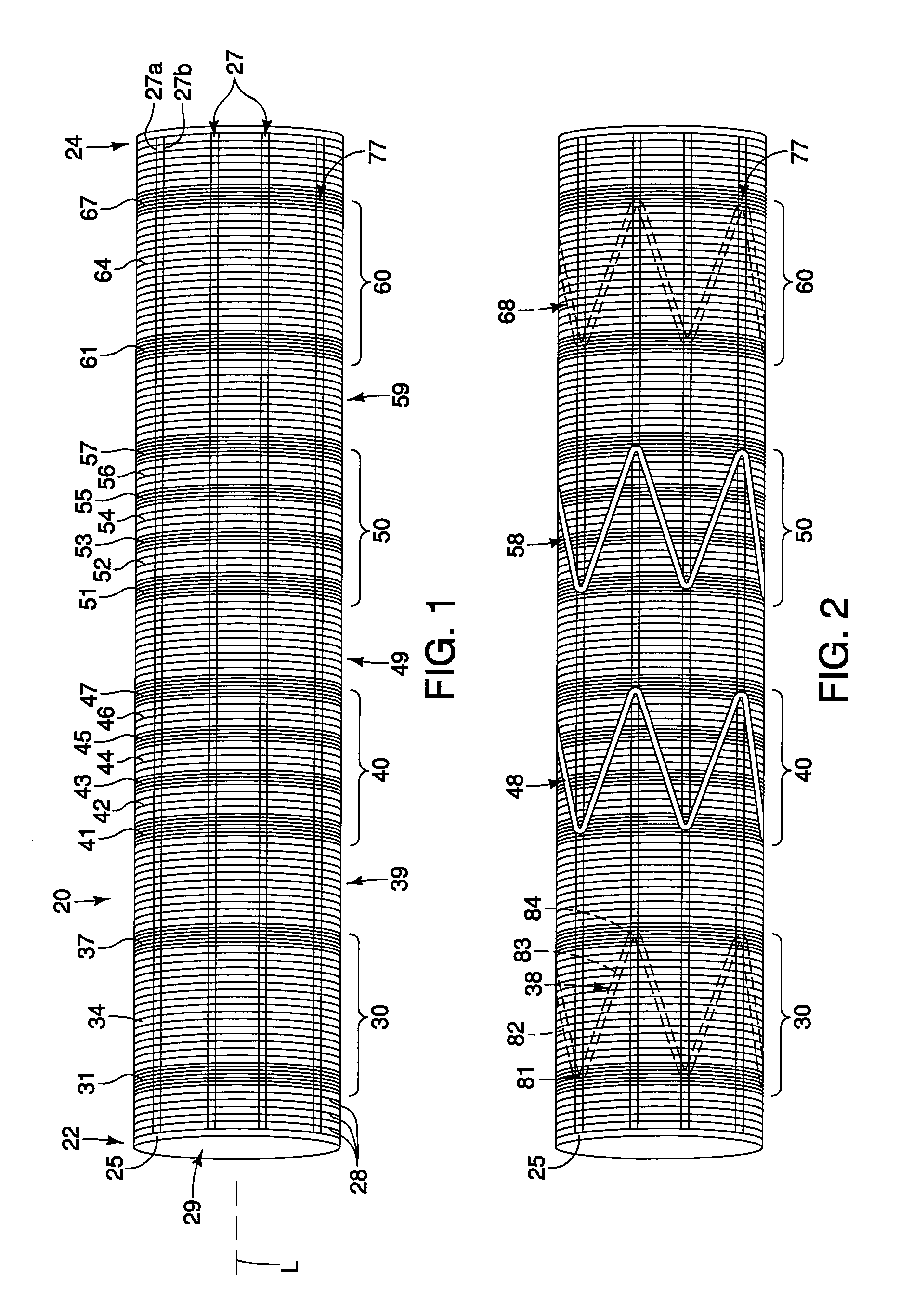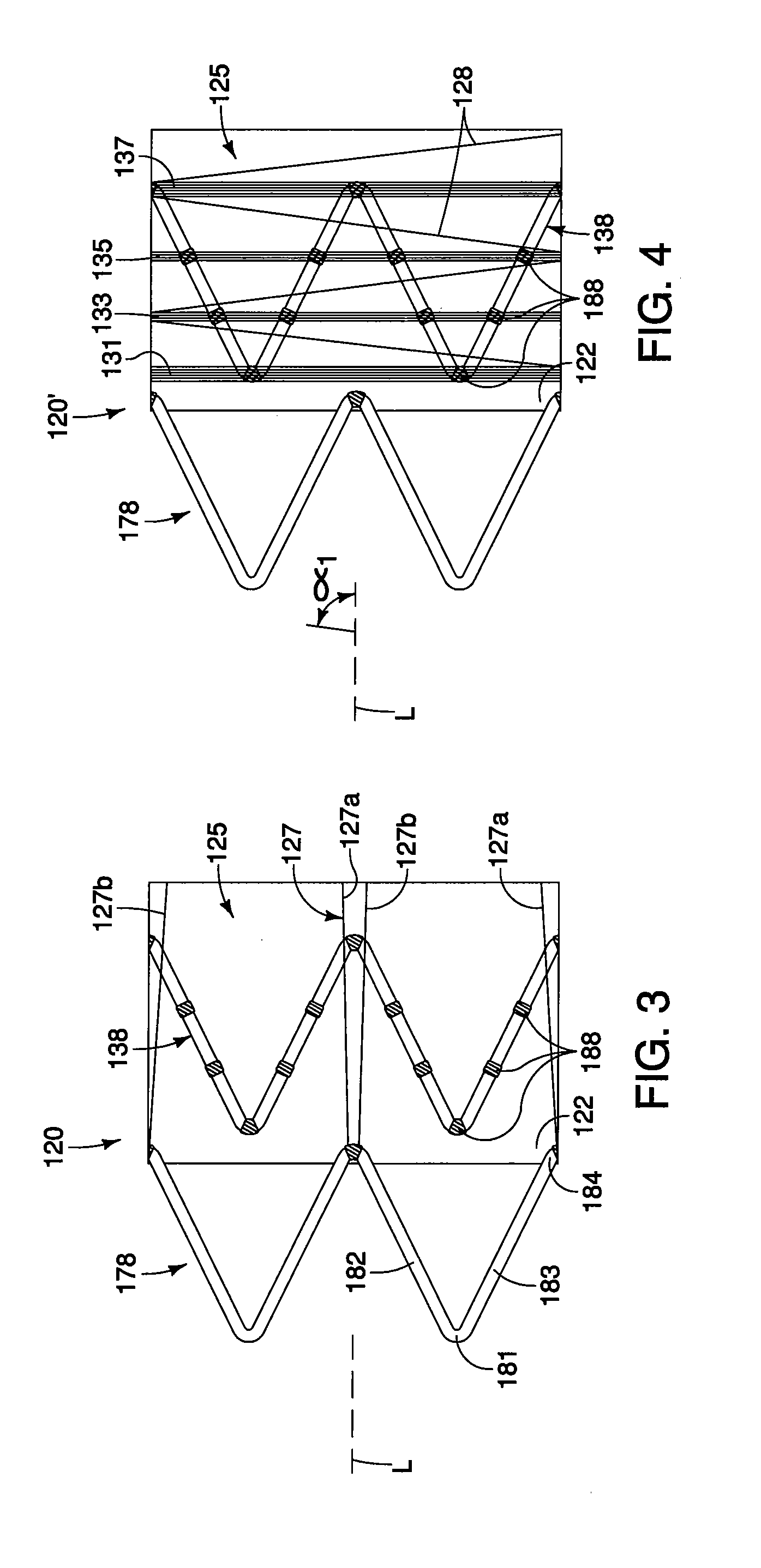Medical prostheses having bundled and non-bundled regions
- Summary
- Abstract
- Description
- Claims
- Application Information
AI Technical Summary
Benefits of technology
Problems solved by technology
Method used
Image
Examples
Embodiment Construction
[0022]In the present application, the term “proximal” refers to a direction that is generally closest to the heart during a medical procedure, while the term “distal” refers to a direction that is furthest from the heart during a medical procedure.
[0023]Referring now to FIGS. 1-2, a first embodiment of a stent-graft 20 is shown. As shown in FIG. 1, the stent-graft 20 comprises a membrane 25 having proximal and distal ends 22 and 24, respectively, and a lumen 29 extending therebetween that is dimensioned for fluid flow for a given application.
[0024]The stent-graft 20 further comprises at least one axial fiber 27 and at least one circumferential fiber 28. Preferably, a plurality of axial fibers 27 and circumferential fibers 28 are provided, and are arranged in predetermined patterns for one or more desired functions, such as providing stent attachment locations and / or being positioned in regions along the stent-graft 20 that are subject to relatively high hydrodynamic forces, as expla...
PUM
 Login to View More
Login to View More Abstract
Description
Claims
Application Information
 Login to View More
Login to View More - R&D
- Intellectual Property
- Life Sciences
- Materials
- Tech Scout
- Unparalleled Data Quality
- Higher Quality Content
- 60% Fewer Hallucinations
Browse by: Latest US Patents, China's latest patents, Technical Efficacy Thesaurus, Application Domain, Technology Topic, Popular Technical Reports.
© 2025 PatSnap. All rights reserved.Legal|Privacy policy|Modern Slavery Act Transparency Statement|Sitemap|About US| Contact US: help@patsnap.com



